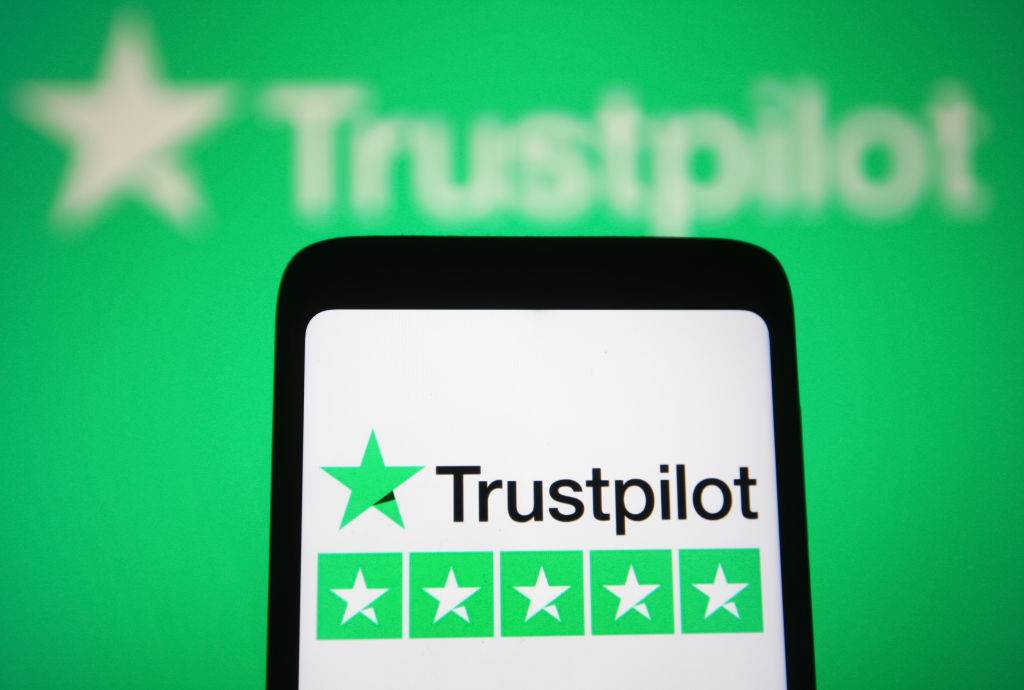Inheritance tax refunds: how to claim money back if asset prices fall
Families make 18,000 reclaims for overpaid inheritance tax in three years, often due to a decline in property prices. We explain how to claim an IHT refund


Samantha Partington
Families made 18,000 reclaims for overpaid inheritance tax during the past three years, according to a Freedom of Information (FOI) request.
More than two-thirds (12,915) were related to the sale of property.
Inheritance tax is assessed on the value of a person’s estate on the date of death, and the tax must usually be paid within six months.
MoneyWeek
Subscribe to MoneyWeek today and get your first six magazine issues absolutely FREE

Sign up to Money Morning
Don't miss the latest investment and personal finances news, market analysis, plus money-saving tips with our free twice-daily newsletter
Don't miss the latest investment and personal finances news, market analysis, plus money-saving tips with our free twice-daily newsletter
However, if the price of any property or shares has fallen by the time they are sold, the executor can reclaim the overpaid tax from HMRC. The tax refund is not automatic and has to be proactively applied for.
NFU Mutual, which submitted the FOI request, found that the number of reclaims on property has increased by 65 % between the 2022-2023 and 2024-25 tax years.
Sean McCann, chartered financial planner at NFU Mutual, comments: “A large inheritance tax bill can be a nasty shock for grieving families. These figures show that more and more people are waking up to the possibility that they could reclaim overpaid inheritance tax.”
Inheritance tax receipts seem to rise every month, and every year. Official data from HMRC shows that £1.5 billion was taken from estates in May 2025.
This is up 7% annually (£98 million compared to the same period last year) as more families get caught out by frozen tax thresholds and the rising value of assets.
A record £8.2 billion of IHT was paid in 2024-25, which is £0.8 billion higher than the previous year.
When is inheritance tax payable?
Inheritance tax is payable if the value of your estate on death exceeds the tax-free limits afforded by the government.
Everyone has a tax-free limit currently set at £325,000 – known as the nil-rate band. If your estate is worth more than this nil-rate band, HMRC can potentially take 40% of the excess.
The government also gives families an extra allowance, known as the residence nil-rate band, of £175,000 to those who leave their home to children or grandchildren.
By combining the nil-rate band with the residence nil-rate band you could have a total tax-free allowance of £500,000. If you are married or in a civil partnership, you can leave everything to your other half with no tax to pay.
A surviving spouse also inherits both allowances so, assuming a home is left to children or grandchildren, it means the surviving spouse will have a combined tax-free and property limit of £1 million when they die.
The tax-free limits have been frozen since 2009 and both the nil-rate band and the residence nil-rate band will remain so until 2030. Furthermore, from April 2027, pensions will be included in the IHT calculation, while changes to agricultural and business property relief will take effect from April 2026.
“These changes mean more people will be caught in the inheritance tax net”, says McCann at NFU Mutual.
Indeed, IHT receipts are forecast to rise to £14.3 billion in 2029-30, with about £2.5 billion of the increase due to changes announced in last year’s Autumn Budget, according to the Office for Budget Responsibility (OBR).
Why you might be due an inheritance tax refund
Not many people know that it’s possible to claim an IHT refund for up to four years after they have paid the tax.
When someone dies, their estate is valued for IHT purposes on the basis of what it was worth on the day they died. If IHT is owed, then it must be paid within six months.
But if assets within the estate are later sold for less than their initial value, you can claim a tax refund.
If you sell shares for less than their initial value within 12 months, you can claim an IHT refund. For the sale of property, it’s within four years and a lot can happen in the housing market over a four-year period.
Cast your mind back two years ago and house prices were falling as a surge in mortgage rates caused a dramatic drop in buyer demand.
House prices have fallen again in recent months due to a stamp duty hike in April. The average UK house price dropped by 0.8% in June, the biggest monthly decline since February 2023, according to Nationwide.
So, if you recently sold a loved one’s home, it could have sold for less than the amount it was valued at - and you could be eligible for an IHT refund.
A total of 12,915 reclaims have been made on the sale of property in the last three years, according to the FOI request of HMRC data.
As well as a fall in house prices, McCann points out that other reasons why you may be able to claim a refund include “the property having been overvalued on the inheritance tax return, or because of deterioration of the property between the death and subsequent sale”.
In terms of reclaiming overpaid IHT on shares, over the past three years there were 5,096 refunds where executors have sold shares or other qualifying investments following a fall in value.
“During times of market volatility, it’s important that families check whether they can reclaim inheritance tax, in some circumstances it can amount to thousands of pounds,” says McCann.
Are you entitled to claim an inheritance tax refund?
If an estate property is sold for less than the value declared at the time the owner died, the estate may be eligible for an inheritance tax refund through the Loss on Sale of Land relief if certain criteria are met.
This relief allows some of the IHT originally paid based on the higher probate valuation to be refunded. However, if the relief does not apply because the sale does not meet certain conditions, you will not receive a rebate.
For example, the sale of the property and any reclaim for tax paid must be made by the executors of the estate.
The loss must equate to more than £1,000 or 5% of the valuation at death, whichever is lower. And a refund is also not available if the sale was made to a beneficiary or one of their relatives.
How to calculate an inheritance tax refund on property
Here’s an illustration of how to calculate your IHT refund:
Your estate, which in this instance consists of just a property, is valued at £500,000 on your death. You have never married, nor do you have any children and you have made no lifetime gifts.
In your will, you leave your property to a friend. This means that only the nil-rate band is available when calculating the estate’s IHT liability, which is currently £325,000 charged at 0%.
The value of your estate that exceeds this sum will attract 40% inheritance tax, which means the estate has an IHT liability of £70,000 to pay (£500,000 – £325,000 x 40%).
Your property ultimately sells for £400,000, and contracts for sale are exchanged within four years of the date of death. This means the estate’s IHT liability is £30,000 (£400,000 - £325,000 x 40%), and so a £40,000 refund is payable.
Tom Newton, senior associate at law firm Nelsons in the wills and probate team, comments: “Changes in condition of the property or damage to it since it was valued for probate purposes or the method in which the property is sold, for example by auction compared to the open market, may cause the sale value of the property to be lower than it was initially valued.”
Interest is typically paid by HMRC on the overpaid amount and is usually calculated from the date the overpayment occurred until the date the repayment is issued by HMRC.
How to claim an inheritance tax refund
It is your responsibility to proactively claim a refund from HMRC.
Inheritance tax is also refunded on investment losses, but only if you sell for a lower value within the first year after the death of a relative.
You claim an IHT refund on property or land by filling in the IHT38 form from Gov.uk.
You’ll be asked questions such as the date of the sale, gross sale proceeds, the name of the buyers and whether you sold it for less than the best price that you could have achieved.
For shares, you need to use form IHT35 to claim relief when you sell “qualifying investments” that were part of the deceased's estate at a loss within 12 months of the date of death.
How long does an inheritance tax refund take?
From the point of submission of form IHT38, refunds can take approximately three to nine months to be processed and paid by HMRC.
Interest is typically paid by HMRC on the overpaid amount and is usually calculated from the date the overpayment occurred until the date the repayment is issued by HMRC.
How can I maximise my inheritance tax refund?
There are ways families can maximise how much inheritance tax they reclaim.
McCann explains: “If you are reclaiming overpaid IHT following a fall in the value of shares or investments, all qualifying investments sold by the executor in the 12 months following death must be included in the claim, not just those that have fallen in value. If some have increased in value, this will reduce the amount of inheritance tax that can be reclaimed.
“In these circumstances, it may be more advantageous for the executors to pass the shares or investments that have increased in value directly to the beneficiaries rather than sell them. This means you make a claim only for those shares that have fallen in value, ensuring you maximise the benefit.”
Get the latest financial news, insights and expert analysis from our award-winning MoneyWeek team, to help you understand what really matters when it comes to your finances.

Ruth is an award-winning financial journalist with more than 15 years' experience of working on national newspapers, websites and specialist magazines.
She is passionate about helping people feel more confident about their finances. She was previously editor of Times Money Mentor, and prior to that was deputy Money editor at The Sunday Times.
A multi-award winning journalist, Ruth started her career on a pensions magazine at the FT Group, and has also worked at Money Observer and Money Advice Service.
Outside of work, she is a mum to two young children, while also serving as a magistrate and an NHS volunteer.
- Samantha PartingtonContributor
-
 Why Trustpilot is a stock to watch for e-commerce exposure
Why Trustpilot is a stock to watch for e-commerce exposureTrustpilot has built a defensible position in one of the most critical areas of the internet: the infrastructure of trust, says Jamie Ward
-
 Tetragon Financial: An investment trust with stellar returns
Tetragon Financial: An investment trust with stellar returnsTetragon Financial has performed very well, but it won't appeal to most investors – there are clear reasons for the huge discount, says Rupert Hargreaves